CNN took a 11-day cruise through some of the most-contested waters on Earth. Here’s what we learned
- Oops!Something went wrong.Please try again later.
A nighttime transit through the Taiwan Strait is a test of nerves, seamanship and political awareness in an environment where a slight miscalculation could potentially lead to an international conflict.
It’s the first night in November. It’s dark – ink black before the moonrise – and Royal Canadian Navy Cmdr. Sam Patchell is taking that test.
His 4,800-ton warship, the frigate HMCS Ottawa, weaves and dodges between dozens of commercial fishing boats and merchant vessels at speeds of up to 24 mph, all the while tasked with staying outside boundaries dictated by international law, including the recognized territorial waters of China.
The Ottawa’s radar tracks Chinese warships, which, as they try to keep up with the Canadian frigate, are also weaving in and around the red and green lights of the commercial vessels plying their trade in one of the world’s most crowded waterways.
As the captain of a Royal Canadian Navy frigate, Patchell keeps a lawyer and a public affairs officer by his side, because, for Canada – and other Western allies of the United States – this is all about upholding the “rules-based international order,” and if the Canadian ship violates the law of the sea by intruding in territorial waters, or gives adversaries a chance to spin Ottawa’s course as “provocative,” Patchell’s 12-hour cruise would swiftly become an international incident.
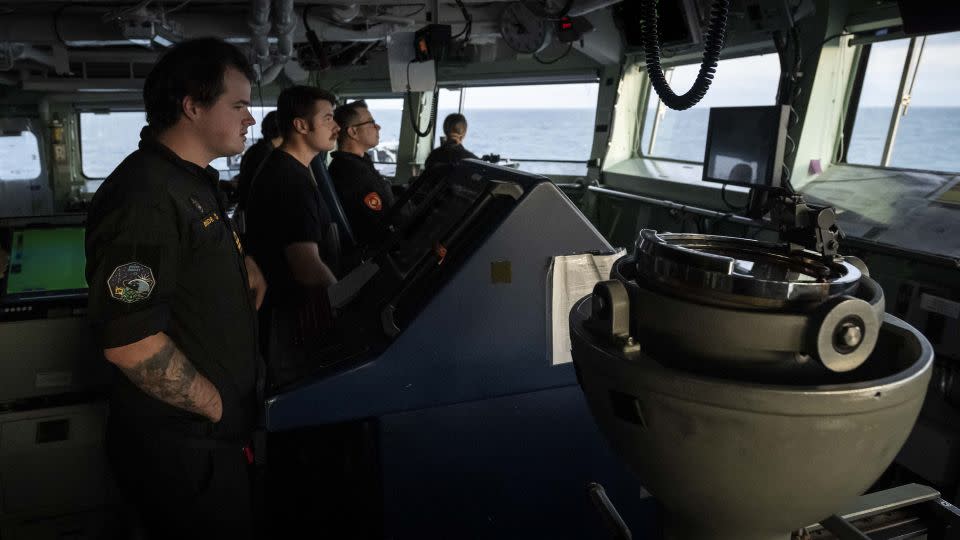
And he’s not just acting for himself. A mile behind the Ottawa, a US Navy destroyer follows Patchell’s lead. That oncoming fishing boat might miss Ottawa, but if he leaves too little space for it to maneuver then it will be the US destroyer that could run into trouble.
It is just one of the tense moments CNN gets to see played out in some of the world’s most contested waters as it joins the Ottawa’s crew for a voyage spanning more than 3,500 miles (5,600 kilometers).
There are live-fire exercises, with the guns of three navies trying to blast a speedboat drone to smithereens.
There are nail-biting refuelings at sea, during which the 440-foot-long Ottawa slices through the waves less than 200 feet away for supply ships as big as 680-feet long (that’s longer than two football fields).
And there are Chinese warships, almost always on the horizon, looking shadowy as they move in and out of the rain showers that so frequently occur across the warm waters of the South China Sea.
Other times, the Chinese presence is in the air, and it can be threatening as the crew of the Ottawa’s helicopter discovered when it was twice intercepted by Chinese fighter jets over international waters. The Chinese jets executed maneuvers that “put the safety of all personnel involved at unnecessary risk,” Canada’s Defense Ministry said.
But it isn’t all tension. There are also barbecues, burgers and beers, a Halloween movie night, and an outrageous crossing-the-equator ceremony, complete with a homemade wooden dunking tub and sentences handed down by King Neptune.
A dangerous place
The Taiwan Strait, the 110-mile wide waterway separating mainland China from the democratically-ruled island of Taiwan, is considered one of the most potentially volatile portions of sea in the world.
While conflict rages in Gaza and Ukraine, many analysts fear that these waters could be the next arena for war.
Chinese leader Xi Jinping has vowed to take control of Taiwan, which the Chinese Communist Party considers part of its territory – despite never having ruled it – and by force if necessary.
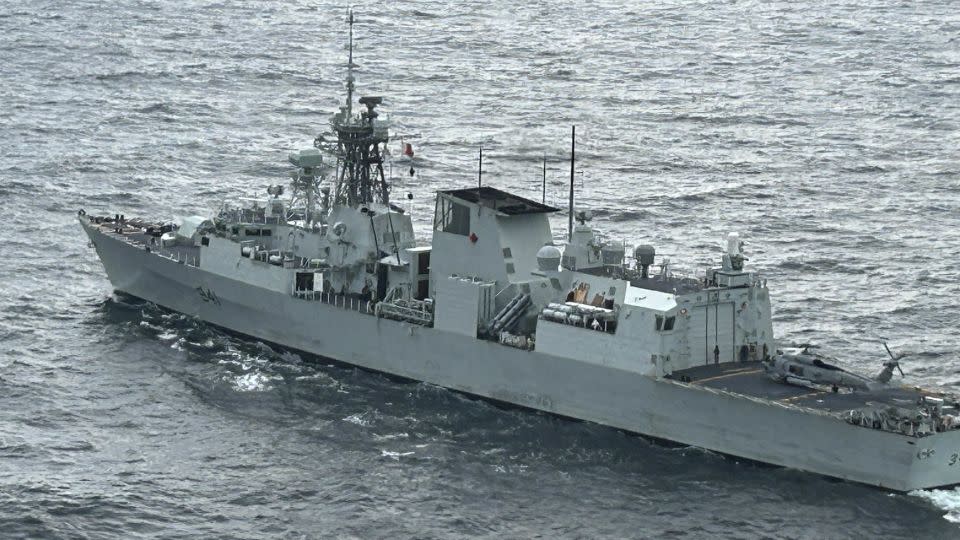
But the United States is committed to providing the island the means to defend itself, and Washington has been regularly sending warships through the strait to demonstrate that ships have the right of free passage through it under the international law of the sea.
The November 1 transit of USS Rafael Peralta is the sixth this year by US Navy or Coast Guard ships, according to a database kept by Collin Koh, research fellow at the S. Rajaratnam School of International Studies in Singapore.
Beijing calls these sailings a provocation and a violation of Chinese territory.
The Royal Canadian Navy has joined the US Navy on some of sailings, including one last June during which a Chinese warship came dangerously close to the American vessel USS Chung-hoon – so close that the US captain had to take action to avoid a collision.
Chess on the water
That incident is on the mind of the commander of HMCS Ottawa as his ship enters the strait from the south in the early evening of November 1 with the Rafael Peralta close behind.
“We just want to get through here safely,” Patchell, the Ottawa’s captain, says.
“The Chung-hoon incident is something I’m thinking about.”
Patchell explains his plan for the 12-hour strait crossing. He’ll stick as close as possible to a line that keeps his ship at least 24 nautical miles from the coasts of both mainland China and Taiwan.
Although the internationally recognized limit for territorial waters is 12 nautical miles, there’s another 12 outside of that called the “contiguous zone.” It’s a “buffer zone” to allow mainland China or Taiwan, in this case, to warn ships away from their territorial waters, he says, but passing ships have every right to be in it.
Still, the Ottawa’s course prompts a warning from Taiwan’s military, which has ships in the strait monitoring the progress of the Ottawa and Rafael Peralta. A voice over the radio advises Patchell to alter course to avoid Taiwan’s zone.
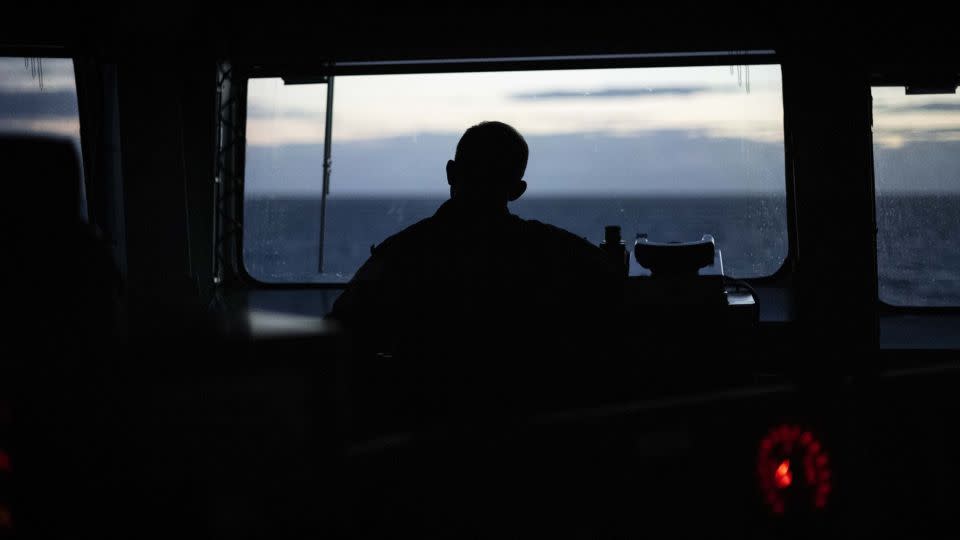
But he says his bigger concern are the green-and-red-lit commercial fishing boats that keep popping up in front of the Ottawa. Avoiding a collision with them is Patchell’s most immediate priority.
He instructs the crew on minor course changes to weave Ottawa’s way between the lights. And as if he were playing chess, he tries to think several moves ahead.
“You have to be careful not to solve one navigation problem and then create three more,” he says.
Throughout the night, as the Ottawa weaves, Patchell does all he can to prevent his ship’s bow from pointing in the direction of China. That can send the wrong message, he says.
And as day breaks, and the Ottawa heads into the East China Sea at the north end of the strait, Patchell’s navigation plan has worked. Chinese warships have stayed well away – and haven’t even hailed the Ottawa by radio.
There is no Chung-hoon repeat on this November night.
This is China’s lake
Though the People’s Liberation Army Navy doesn’t hail HMCS Ottawa this time, they are always watching, visible on radar if unseen by the naked eye in the dark of night.
In fact, the PLA Navy seems to have at least one shadow on the Ottawa almost constantly after the fourth day of the cruise, after the Canadian ship approaches the Spratly Islands, a chain in the southern portion of the South China Sea where Beijing has built military installations on manmade islands in contested territories – despite Xi’s pledge not to do so and disregarding the ruling of a United Nations tribunal that some of these territories don’t even belong to China.
China claims almost all of the 1.3 million-square-mile South China Sea as its sovereign territory. But portions of it are also claimed by governments in Vietnam, the Philippines, Malaysia, Brunei and Taiwan.
None of those governments make claims as sweeping as Beijing’s.
And Beijing has no shortage of ships to assert its claims. Xi has overseen a naval construction boom that has seen China’s navy surpass the US as the world’s largest.
The crew of Ottawa is kept keenly aware of the Chinese presence. Each morning at 7 a.m., a wakeup/breakfast call over the ship’s loudspeakers is followed by a report on the ship’s situation.
The type and hull number of the Chinese warships tracking Ottawa are part of that situation report.
There are other reminders, too. For much of the trip, especially in the vicinity of Chinese-held islands, cell phones are not allowed on the ship’s open decks, in case they become hacking targets. A paper sign on hatches leading to the outside reminds crew members not to take their devices outside.
In daylight hours in the South China Sea, from Ottawa’s flight deck or outdoor bridge wings, Chinese warships are often visible to the naked eye. At dusk, their silhouettes sometimes give them away against the setting sun.

On October 29, things take a potentially dangerous turn, one that could have cost lives and ratcheted up tensions in the South China Sea to new levels.
While searching for a previously noted submarine contact east of the Chinese-claimed Paracel Islands, the Ottawa’s helicopter, with its crew of four, reports two close encounters with Chinese fighter jets, the latter coming within 100 feet of the Canadian helicopter and, on the second occasion, releasing flares in front of it that could have caused it to crash, Canadian officials said.
“The risk to a helicopter in that instance is the flares moving into the rotor blades or the engines, so this was categorized as both unsafe and non-standard, unprofessional,” says Maj. Rob Millen, air officer aboard the Ottawa.
The incident is far from rare. US defense officials said in October they’d seen almost 200 “coercive and risky” examples of Chinese flying in the previous two years over the South and East China seas.
The Canadians see it also. Just two weeks earlier, a Royal Canadian Air Force patrol plane reported an unsafe intercept by a Chinese jet.
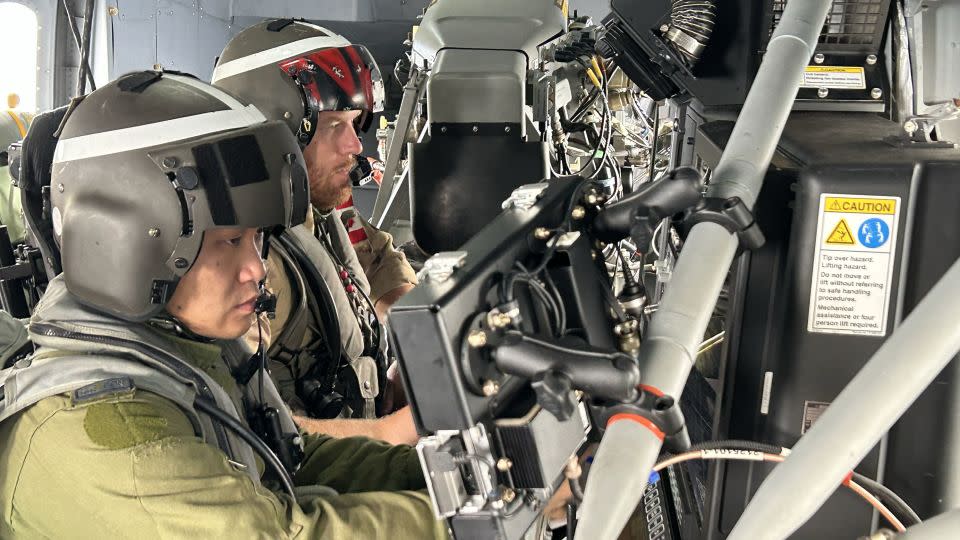
Beijing has pushed back, accusing Canada of “smearing China” in the chopper episode and lecturing Washington on the location of such close encounters.
“(They) were in the waters and airspace around China, not in the Gulf of Mexico or off the US West Coast.” said a Chinese Defense Ministry spokesman on October 26. “How can the Chinese military intercept the US aircraft and warships if they don’t come?”
The flare incident is on the mind of a CNN reporter flying in the same helicopter over the East China Sea a few days later. There is no Chinese intercept on this day, but CNN spots three Chinese warships during just a three-hour flight. They are just a fraction of an active fleet the Pentagon estimates at more than 340 warships.
Two radar operators in the cabin of the copter look for warship contacts on their instruments while in the cockpit two pilots search for the long wakes that are an indication of ships moving at high speeds.
“That looks warshippy,” they say when spotting something suspicious.
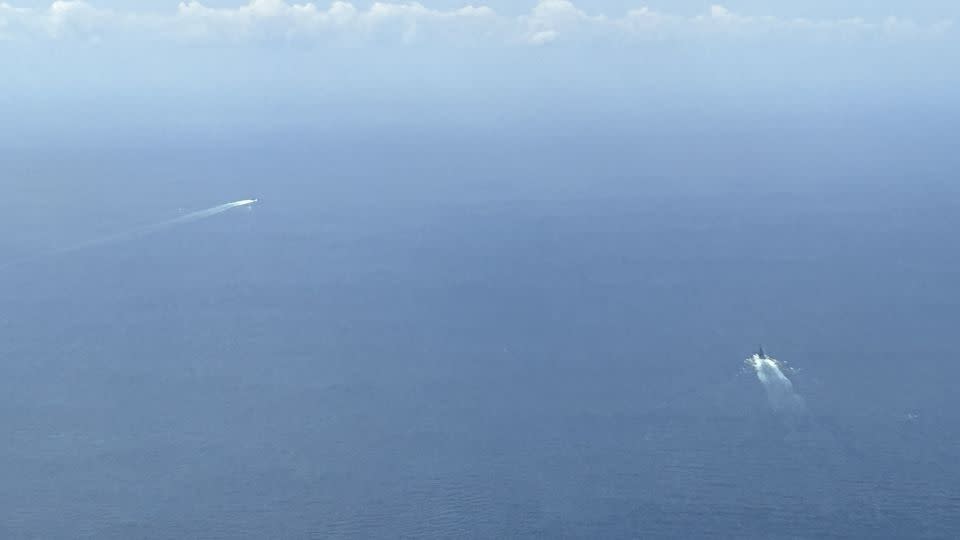
Live-fire drills
Day four of the 12-day journey sees Ottawa in the southern portion of the South China Sea, in a warship troika with USS Rafael Peralta and the Australian destroyer HMAS Brisbane.
The three surface combatants line up with Peralta leading and Ottawa trailing for a chance to test their big guns, five-inch weapons on the bigger Peralta and Brisbane and a 57mm-gun on Ottawa.
But Ottawa has the star player of the exercise, the Hammerhead target drone, otherwise known as an unmanned surface vehicle – target (USV-T).
It’s essentially a 16-foot remote controlled speedboat capable of speeds up to 40 mph.
“The Hammerhead USV-T replicates high-speed naval tactics and a variety of operational guidance plans including straight-on high-speed attacks, crossing patterns, zig zag patterns, and other evasive maneuvers,” the UK-based manufacturer Qinetiq says on its website.
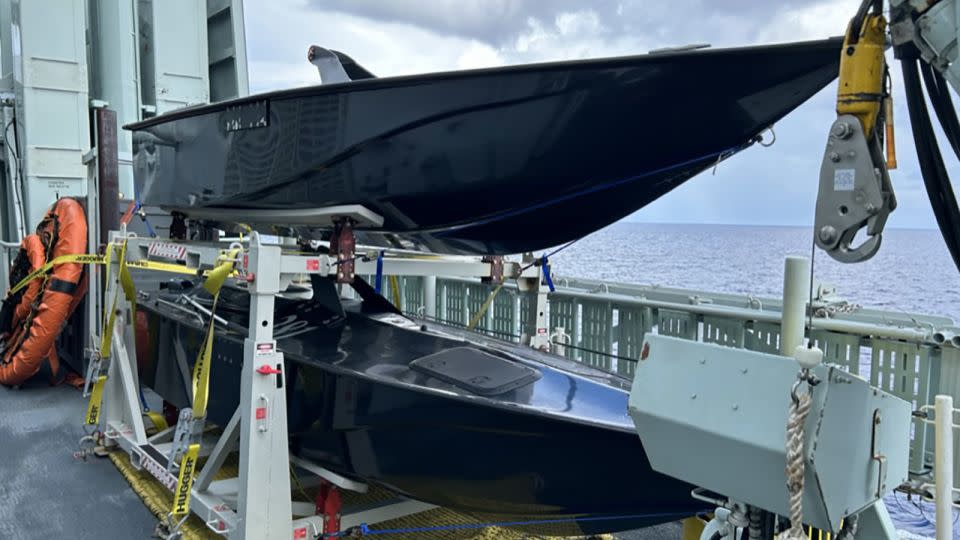
Radio operators aboard Ottawa announce over international frequencies that the drill is about to start, and they repeat the warning at 15-minute intervals as it takes place.
They identify themselves as “coalition warship 341” – that’s Ottawa’s hull number as seen just behind its bow – and remark how strange it is not to call themselves “Canadian warship 341” as would be standard practice.
But it’s a reflection of the cooperation being fostered in the region by Washington and its allies and partners.
The live-fire drill is part of exercise “Noble Caribou,” which involves ships and aircraft from five countries – the United States, Canada, Australia, Japan and New Zealand.
Units from each of the five move in and out of the exercises depending upon daily priorities. Only Canada, the US and Australia are participating in the live-fire drill.
As Peralta, then Brisbane and finally Ottawa test their big guns with smoke bursts out over the open water of the South China Sea, the Hammerhead gets ready to make simulated attack runs at them.
Peralta fires first at the speeding boat, shooting off rounds to test the destroyer’s aim but not necessarily sink or disable the Hammerhead. After a few shots, the US ship’s gun misfires.

Controllers on the Ottawa start the Hammerhead on a run at Brisbane and the Australian destroyer’s gunners are honed in. An explosive shell disables the remote-controlled speedboat in a puff of black smoke and large splashes of shrapnel.
But the Hammerhead isn’t sunk and for safety’s sake – it could be a navigational hazard to other ships if left on the surface – it must be sent to the bottom.
That’s Ottawa’s job, but the commanding officer, Cmdr. Patchell, doesn’t want to use shells from the ship’s main gun, which cost more than $7,000 each, to do the job. Ammo from the .50-caliber machine gun on the ship’s bridge wing should be able to sink the Hammerhead much more cheaply.
After a few bursts, flames pour from the 16-foot drone, quickly consuming it as leaking fuel burns on top of the water. Hammerhead’s bow rises up and it slips beneath the surface, leaving fuel and oil burning for a minute or two.
Lt. Sean Milley, operations officer on the Ottawa, says the live-fire drill was a success.
The Americans don’t have drones like the Hammerhead, he says, so US gunners love the chance to be tested by the Canadian drone in exercises like these.
Refueling at sea
Ottawa has a range of almost 11,000 miles (17,600 kilometers). That is more than enough to cover the distance it will travel during the voyage from Singapore to Okinawa on this trip.
But the ship must constantly be ready for all eventualities, says Lt. Cmdr. Christine Hurov, the Ottawa’s public affairs officer.
So, it keeps fuel tanks for its two gas-turbine and single diesel engines topped up through replenishments at sea, known as RAS to the crew.
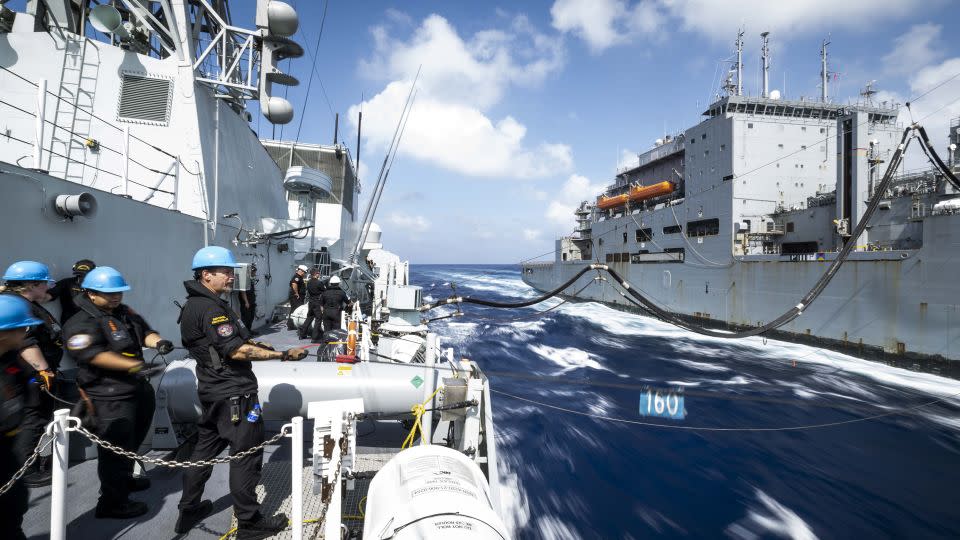
Ottawa takes on average about 40,000 gallons (150,000 liters) of fuel in an RAS event. That’s about a quarter of the capacity of its fuel tanks. It does four refuelings during the trip from Singapore to Okinawa, one from a New Zealand supply vessel, two from an American one, and onee from an Australian one.
The refuelings are tests of nerves, seamanship, communications and coordination for the crews of both the supply ships and the frigate.
During the first RAS, with the New Zealand Navy’s largest ship ever, HMNZS Aotearoa, Cmdr. Patchell cautiously moves his ship alongside HMNZS Aotearoa, which at 24,000 tons is about five times Ottawa’s size.
The Ottawa’s crew crouches for cover behind anything solid as the supply ship fires lines across that will carry fuel hoses and distance markers.
Once the fuel hose is locked into the receptacle for Ottawa’s tanks, Patchell and his crew try to maintain a constant 16 mph speed with the supply ship and hold the distance at between 160 feet to 200 feet.
Patchell and his ship drivers are also fighting physics. The rushing, turbulent seas between the two ships are real-life applications of what is known as Bernouli’s principle – pressure changes due to the speed of the waters could pull Ottawa into the much larger tanker.
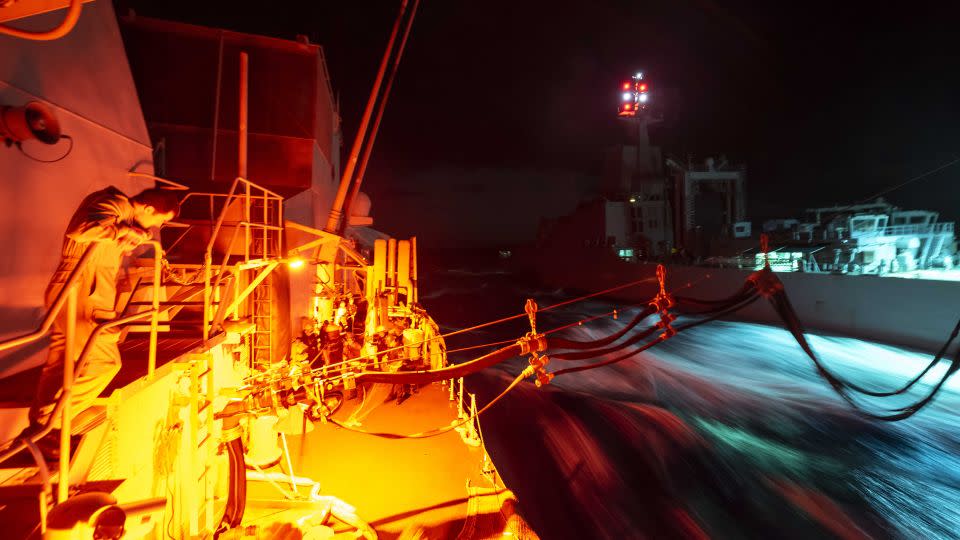
Patchell issues course corrections of one or two degrees to keep Ottawa lined up and the fuel hoses connected.
The refueling takes about 90 minutes, and when the fuel lines have been drained and the connection is broken, it’s celebrated, as all RAS are aboard Ottawa, with blaring music, on this occasion from Canadian artist the Weeknd, with “Blinding Lights.”
A later RAS, on a Saturday with the American ship USNS Wally Schirra, is appropriately ended with Loverboy’s “Working for the Weekend.”
But the crew of Australia’s HMAS Stalwart probably get the award for music during the Ottawa’s 11-day cruise.
Midway through a nighttime refueling in the East China Sea, the Australian vessel began blaring “Oh Canada” (not the Canadian national anthem) from rapper Classified across the waves as the opener of a set of tunes. Coupled with the glow sticks that help illuminate the work areas on Ottawa, it makes the ocean seem more like a dance party than a military maneuver.
The lighter side of the South China Sea
Like the Australians, the Canadians try to make sure there’s a balance to what they do in these contested waters.
So there is a beer, burger and hotdog barbecue on the rear flight deck. For Halloween there are decorations, costumes and a movie night featuring a scary flick on a big screen watched from personal lawn chairs under an almost full moon (and the watchful eyes of a Chinese warship).
But the highlight of this voyage for many aboard the Canadian frigate is a “crossing the line” ceremony, an event that marks the first time a sailor crosses the equator.
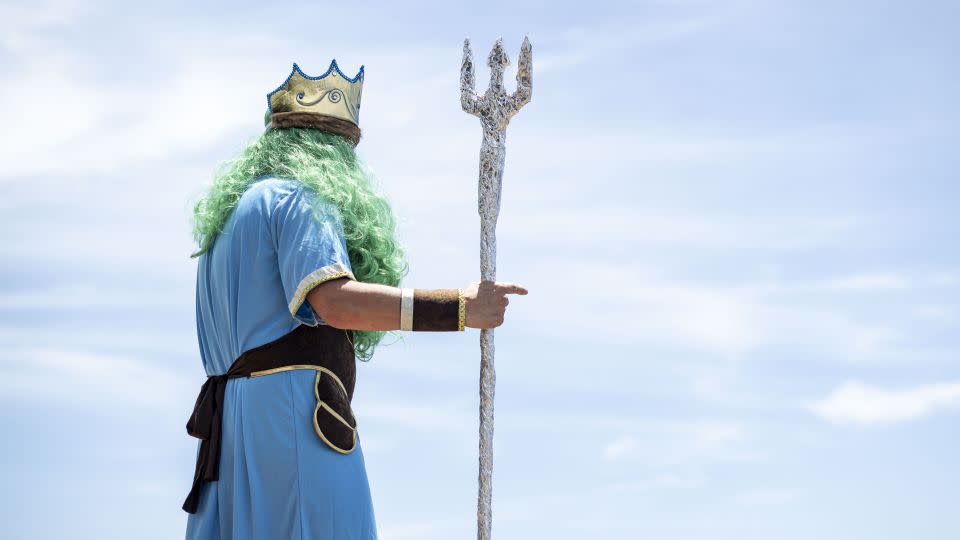
Dozens aboard Ottawa earned their spot in the ceremony when the frigate dipped into the Southern Hemisphere to the south of Malaysia and Singapore earlier in its Pacific deployment.
The ritual involves soakings, eating unappetizing food, a court presided over by King Neptune, god of the sea, and eventually a dunking in a specially constructed “hot tub” on the rear flight deck of Ottawa.
At the end, first-time crossers are issued cards to prove their status that they will treasure for the rest of their sea-going days, lest they be sentenced by Neptune’s court again.
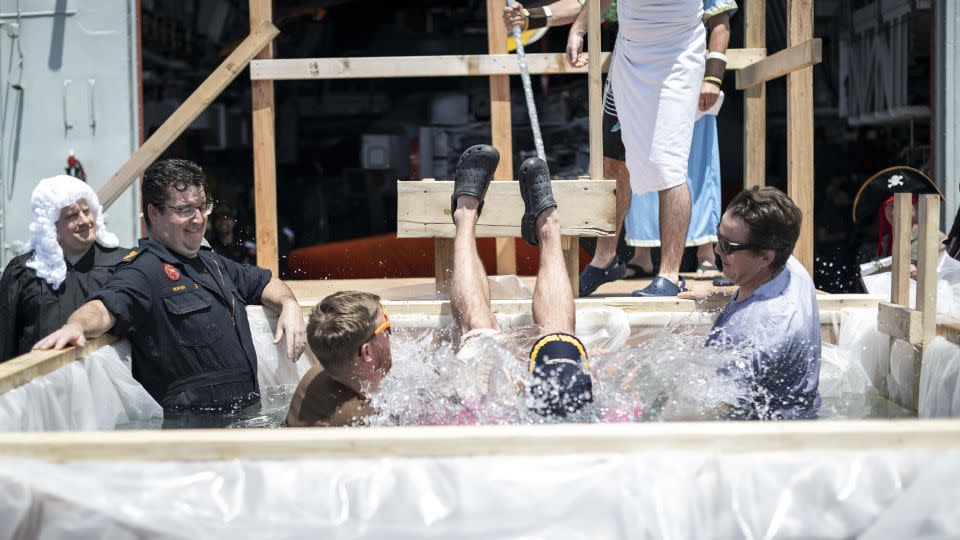
One enlisted crewman describes getting the card as Christmas come early with the best present ever.
It’s the kind of thing Patchell wants to hear from his crew.
He doesn’t want his crew wound too tight, and he also wants to show that what Ottawa is doing is routine, moving through international waters in ways allowed by international laws and norms.
“We don’t have what’s called freedom of navigation operations,” he says.
He goes over Ottawa’s planned route.
“It’s international waters, and we want to go in that direction. We’ll go in that direction, as we’re allowed to do,” he says.
“We don’t make it a thing.”
For more CNN news and newsletters create an account at CNN.com

